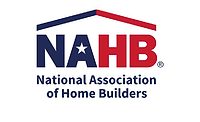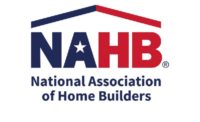Multifamily Construction Sentiment Improves in Third Quarter

Confidence in the market for new multifamily housing improved in the third quarter, according to results from the Multifamily Market Survey (MMS) released by the National Association of Home Builders (NAHB). The MMS produces two separate indices. The Multifamily Production Index (MPI) increased five points to 53 compared to the previous quarter. The Multifamily Occupancy Index (MOI) also increased by five points, up to 75-the highest reading since the inception of the index in 2003.
The MPI measures builder and developer sentiment about current conditions in the apartment and condo market on a scale of 0 to 100. The index and all of its components are scaled so that a number above 50 indicates that more respondents report conditions are improving than report conditions are getting worse.
The MPI is a weighted average of three key elements of the multifamily housing market: construction of low-rent units-apartments that are supported by low-income tax credits or other government subsidy programs; market-rate rental units-apartments that are built to be rented at the price the market will hold; and for-sale units-condominiums. All three components increased from the second to the third quarter: The component measuring low-rent units rose six points to 55, the component measuring market rate rental units increased nine points to 60 and the component measuring for-sale units posted a two-point gain to 47.
The MOI measures the multifamily housing industry's perception of occupancies in existing apartments. It is a weighted average of current occupancy indexes for class A, B, and C multifamily units, and can vary from 0 to 100, with a break-even point at 50, where higher numbers indicate increased occupancy. With the MOI at 75, this is the highest reading since the inception of the series.
"Strong demand and limited inventory of all types of housing are keeping occupancy strong in multifamily properties across the country," said Justin MacDonald, president and CEO of The MacDonald Companies in Kerrville, Texas, and chairman of NAHB's Multifamily Council. "For that same reason, we have seen robust production of new multifamily properties, although developers continue to deal with very significant supply-side challenges, like finding enough labor, materials and land to build on."
"The record-level MOI is consistent with the strong multifamily occupancy rates reported by the Census Bureau, which are now higher than they've been since the 1980s," said NAHB Chief Economist Robert Dietz. "And an MPI back above 50 is consistent with multifamily housing starts, which have been running at a 460,000-plus annualized rate through the first three quarters of 2021-which should make 2021 the strongest year for multifamily production that we've seen since the tax policy-driven surge of the 1980s. As the economy continues to reopen, housing demand is rising in higher density markets, supporting both multifamily occupancy and production."
For more information, visit nahb.org.
Looking for a reprint of this article?
From high-res PDFs to custom plaques, order your copy today!






.jpg?t=1690771780)